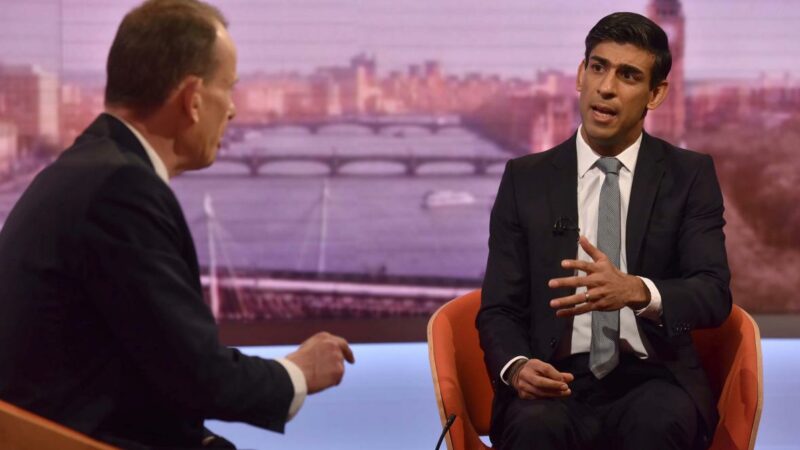The support package for self-employed people is riddled with holes, writes Prof Prem Sikka.

After a lot of dithering, the UK government has finally announced its Self-Employed Income Support Scheme for individuals adversely affected by the coronavirus pandemic.
While any help for them is welcome, the government proposals still have too many omissions and show lack of attention to detail and joined-up policy development.
The scheme
The government has offered a taxable cash grant to self-employed individuals, equivalent to 80% of their average monthly profits over the last three years, with an upper limit of £2,500 a month. The scheme will operate through HMRC for at least three months. This support is similar to that previously offered to employees. However, there are differences.
The self-employed scheme is open to sole traders and partnerships with annual income of up to £50,000 and who have lost trading/partnership trading profits due to COVID-19. The claimant must satisfy the £50,000 limit and also more than half of his/her income must come from self-employment.
How is the annual income to be determined? HMRC will use the average profits from tax returns in 2016-17, 2017-18 and 2018-19 to calculate the size of the grant. The claimants have to show that they traded in 2019-20; be currently trading and intend to continue to trade in the tax year 2020 to 2021. The payments from HMRC are expected to begin in early June 2020.
Seven key problems
- The Chancellor added that only those already in self-employment and who have submitted a tax return for 2019 will be able to apply for the grant. Those who recently embarked on self-employment appear to be excluded from the scheme.
- Is £50,000 a good limit? Consider the case of a corner shop which is open from dusk to dawn and happens to make a profit of £50,001. Its owner/manager would be excluded from the government’s schemes. It could be argued that support scheme would exclude people at the margin, but in this harsh climate the government still needs to support individuals. This could be done by introducing a floor (say a minimum of £1,500 a month). It could have used a combination of a wage subsidy and Universal Basic Income (UBI) to ensure that support is more widely available, but it does not do so.
- In early years of business, many people make losses. Such losses would depress the total of average profits for the last three years and therefore reduce the support to that individual. Some self-employment vehicles may only have been around for a year and may have made a loss. Under the government scheme, those individuals would not be eligible for the income support schemes, but can apply for universal credit (see below). There is again a strong case for introducing a minimum level, a floor, and/or UBI.
- Many individuals work from home. They file tax returns but are neither employee nor easily categorised as self-employed. These include supply teachers and nurses who are paid by agencies, but have PAYE and National Insurance deducted at source by local authorities and hospitals. They don’t easily seem to fit the employee and self-employed category. There are also thousands of zero-contract hour workers with similar issues. Will the government’s announcement do anything for them?
- The cash grant will be paid in a single lump sum instalment covering all 3 months (i.e. March, April and May) and will be paid at the beginning of June. So how are some individuals to make ends meet as the bills for food, water, gas, electricity, rent and rates won’t wait? In principle, they can sign-up for Universal Credit which is subject to complex rules and the amounts are hardly adequate. In normal times, it takes around five weeks to begin receiving universal credit, but in the nine days to 25 March, nearly 477,000 additional people have applied for it and are struggling to gain access to online forms, telephone support and personnel at the Department of Work and Pensions.
- Rather than asking people for wait until June for their cash grant, the government could have alleviated hardship by persuading banks to grant interest free loans for a for a period of three months, but has not done that. Since HMRC already has details of tax returns it could make interim payments, subject to a final adjustment in June, but that has not been done.
- HMRC is required to operate the cash grant schemes, but the government has not provided any additional resources for it. In 2009, HMRC had 76,381 staff and its 2019 annual report shows its staffing numbers to be 63,575. Its budget in 2010 was £4.2bn, compared to £4bn in 2019 – a massive real-terms cut.
The government support for the self-employed is welcome. But as with any policy made on the hoof, it has too many omissions and neglects the welfare of many fellow citizens.
Prem Sikka is Professor of Accounting at University of Sheffield and Emeritus Professor of Accounting at University of Essex. He is a Contributing Editor to LFF and tweets here.
Left Foot Forward doesn't have the backing of big business or billionaires. We rely on the kind and generous support of ordinary people like you.
You can support hard-hitting journalism that holds the right to account, provides a forum for debate among progressives, and covers the stories the rest of the media ignore. Donate today.




One Response to “Let’s look at the fine print of the Chancellor’s self-employment package”
Let’s look at the fine print of the Chancellor’s self-employment package – politics-99.com
[…] Thanks to the Courtesy of : https://leftfootforward.org/2020/03/lets-look-behind-the-fine-print-of-the-governments-self-employm… […]